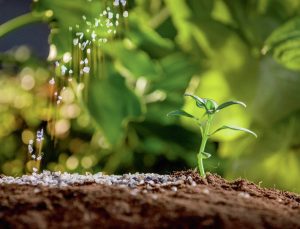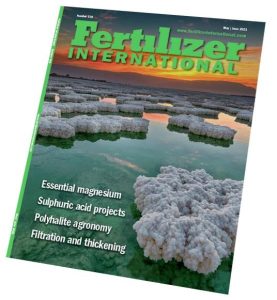
Becoming more inhibited
In 2019, the EU fertilizer market was valued at around e17 billion, with France, Germany and former member state the UK together representing 40 percent of this total.

In 2019, the EU fertilizer market was valued at around e17 billion, with France, Germany and former member state the UK together representing 40 percent of this total.

Polysulphate is an affordable, easy-to-use, multi-nutrient fertilizer with a low environmental impact. ICL’s chief agronomist, Patricia Imas, highlights the crop benefits of this natural and high-value product.

The crushing and grinding of mined phosphate rock and potash ore is a vital preparatory step for subsequent beneficiation and chemical processing. Although often overlooked, the efficiency of downstream P & K fertilizer production is heavily reliant on successful particle size reduction upstream.

We highlight the large-scale nitrogen projects that are currently under development across the globe – with a focus on ammonia and urea technology licensors and engineering contractors.

The European Union is seeking to create a climate-neutral and circular economy through its flagship Green Deal policy. The fertilizer industry can support these objectives by adopting inhibitor treatment technology (ITT) and controlled-release fertilizers (CRFs) based on biodegradable polymers. These two innovations have a vital role to play in improving nitrogen use efficiency and the shift towards more sustainable resource use, says Dr Matthias Potthoff of thyssenkrupp Fertilizer Technology.

A selection of innovative products and technologies that have recently been brought to market.

Developments in sulphuric acid technology and engineering know-how are highlighted by recent project case studies from DuPont Clean Technologies, Metso Outotec and thyssenkrupp Uhde.

What lessons can be learnt from the successful commissioning and start-up of major fertilizer industry construction projects? Recent case studies from the nitrogen, phosphate and potash industries provide some interesting answers.

Magnesium, a key constituent of chlorophyll, plays a vital role in plant photosynthesis and carbohydrate production. Commercial sources of this essential crop nutrient include Epsom salt, kieserite, langbeinite, magnesium chloride and magnesium nitrate.

As recently as five years ago, decarbonising fertilizer production was little more than an aspiration.